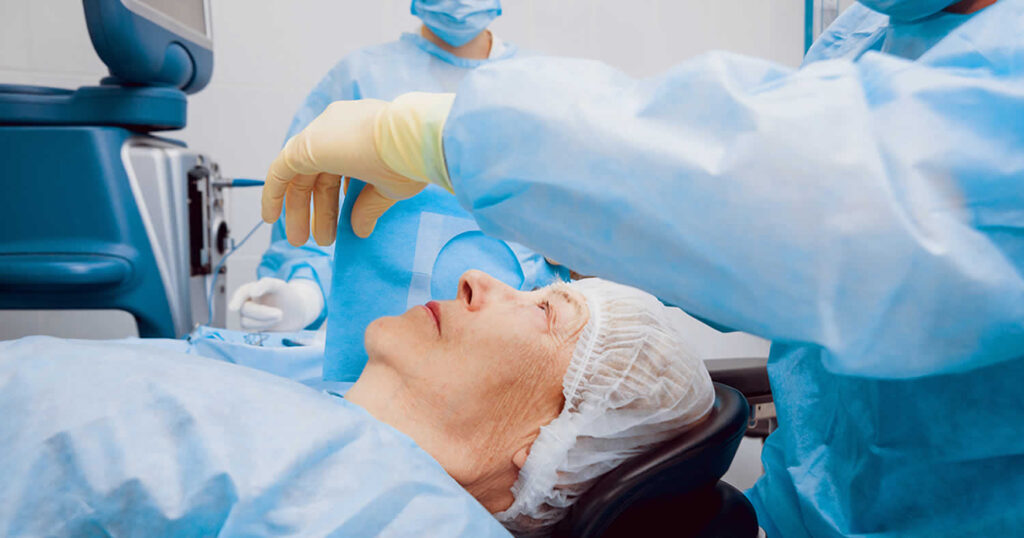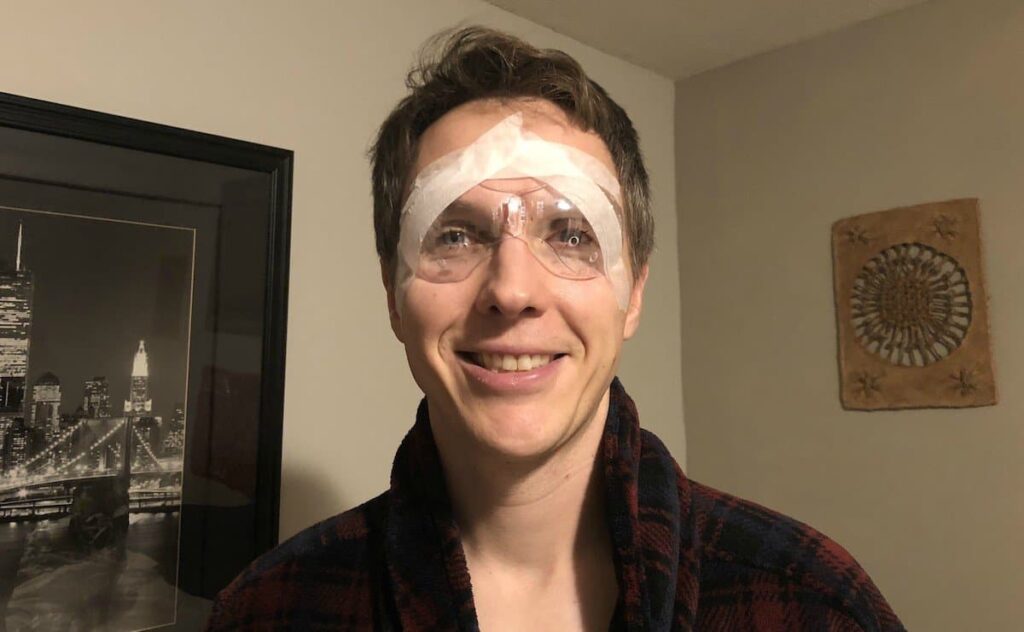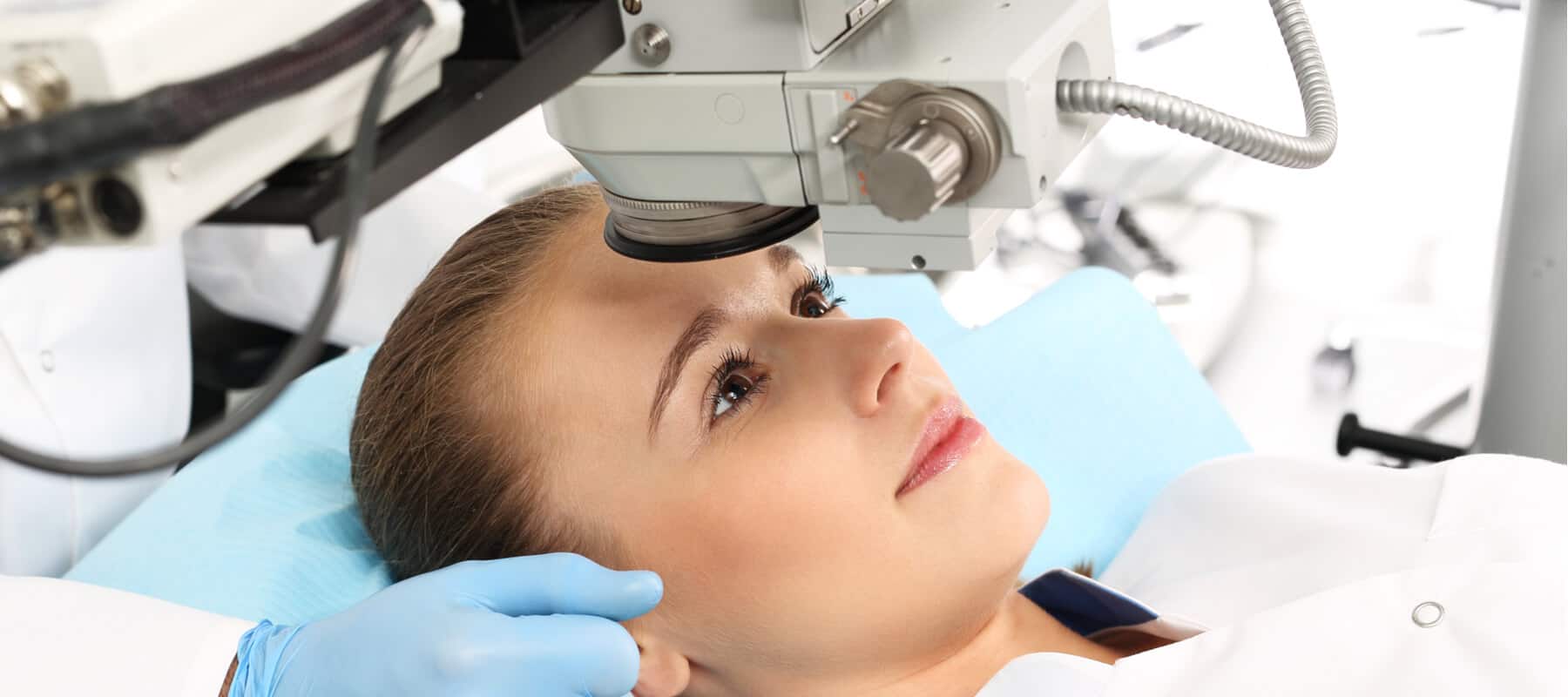An intraocular lens is used to replace a clouded lens after cataracts surgery (IOL). Your eye will be numbed by a local anesthetic, so you shouldn’t feel much discomfort while we work. During surgery, you won’t be able to see what is occurring in your eye since you will be awake but asleep.
Your back is supported while you gaze at a bright light during operation, and our board-certified anesthesiologists will provide local anesthetic to you. We begin by making a small incision in your eye close to the corneal border. The cataracts are then emulsified using ultrasound.
We next insert your new, transparent intraocular lens and remove the emulsified component of your old lens via the little incision. Although this portion of the process only takes around 15 minutes, you’ll need to stay in the clinic longer to get your eye ready for surgery and for a short recuperation time following. Our patients are concerned about unpleasant sights and feelings. Nearly all patients report little to no pain after cataracts surgery if any at all.
Is Surgery for Cataracts Safe?
One of the most often performed treatments is cataracts surgery. Over 20 million individuals globally and over 4 million Americans get cataracts surgeries every year. These operations are among of the safest in contemporary medicine. Due to improved eyesight, they enable millions of people to recover a greater quality of life. In every clinical setting, the cataracts specialists at our eye clinic work to provide the very best outcomes for our patients.
Our board-certified eye surgeons use IV sedation and eye drops to numb the eye’s surface as they perform routine cataracts surgery through microscopic incisions. After the cataracts surgery is over, our patients stay in their own clothes and head back home. After surgery, we don’t typically use needles, stitches, or even an eye patch.

Following cataracts surgery, recovery
Once your new IOL is in place, it becomes an indelible component of your eye and offers long-term vision improvement. You won’t be able to drive right after cataracts surgery, so make plans for a friend or relative to pick you up and take you home. It might take a few weeks for your eyes to feel normal after the procedure because doctors only perform this on one eye at a time. Following cataracts surgery, mild discomfort such as itchiness or a mild but lingering pain is possible. In addition, the eyes may release some fluid and remain sensitive to light and touch for a few days after therapy. It is recommended to use medicinal eye drops to ease the irritation and speed up the healing process. As your eyes adjust to the implanted artificial lens, you can experience blurred vision. Your eyes may not adapt entirely for up to a month.
It’s crucial that you adhere to the surgeon’s directions throughout your rehabilitation. The most crucial stage in your recovery following cataracts surgery is allowing your eyes to properly heal. Make every effort to avoid getting water in your eyes. Try your best to keep your eyes closed when taking a shower to prevent water from getting in them.
Exercise After Surgery: Is It Safe?
Additionally, you have to stay away from any demanding tasks that might raise your eye pressure. For at least the first week, this includes playing any contact sports, squatting, and strenuous exercise. You will get detailed instructions from your surgeon at our clinic on how to effectively start the healing process after cataracts surgery.
Complicacies Following Surgery
Following cataracts surgery, patients may have complications such as infection, edema, vision loss, double vision, and ocular pressure.
These are uncommon and may be prevented with professional care and careful preparation. Patients may resume their regular activities in a few days, although full recovery might take up to four weeks.

Improved Vision Following Cataract Surgery
If you have one (or more) cataracts and need surgery to remove them, your eyesight is probably being affected. Your eyesight may be significantly enhanced with intraocular lenses and cataracts surgery. Vision cannot be improved by eyeglasses or contact lenses since a cataract is a clouding of the lens. The clarity of vision lost over time is recovered by cataracts surgery using IOLs. It’s difficult to quantify the effect that such increased eyesight may have on a person’s life.
Since cataract surgery is a risky treatment, the eye surgeon performing the procedure must be very skilled and careful. If you plan to have cataract surgery, we are here to answer any questions you may have regarding the procedure. The more ready you are, the more comfortable and confident you’ll feel before undergoing cataract surgery.
An experienced cataract eye surgeon in your area often conducts cataract surgeries. Cataracts affect a lot of people, and they often need to be removed. It is essential to rest throughout the healing phase even though Sydney cataract surgery has been shown to be both safe and effective. Following cataract surgery, you should avoid the following few items.
Final thoughts
Even though post-cataract surgical issues are exceedingly uncommon, they might occur and impair the patient’s eyesight. It is important that patients be evaluated the next day since many of these issues become evident the day after cataract surgery. Any problems discovered may then be immediately addressed, allowing for optimal healing and recovery to take place.
Ocular edema may develop as a consequence of the surgical trauma, especially if ultrasonic energy and fluid enter the anterior chamber (blurred vision). While the endothelial cells are trying to drain the water from the corneal stroma, vision will be blocked.
Cataracts surgery is one of the procedures that is carried out most often. Every year, nearly 4 million Americans and over 20 million other people worldwide get cataract surgery. These procedures rank among the safest available in modern medicine. They allow millions of individuals to regain a higher quality of life thanks to enhanced vision. The cataracts experts at our eye clinic strive to provide patients the finest results possible in every clinical situation.
More to read: Different types of lenses used for cataract eye surgery
